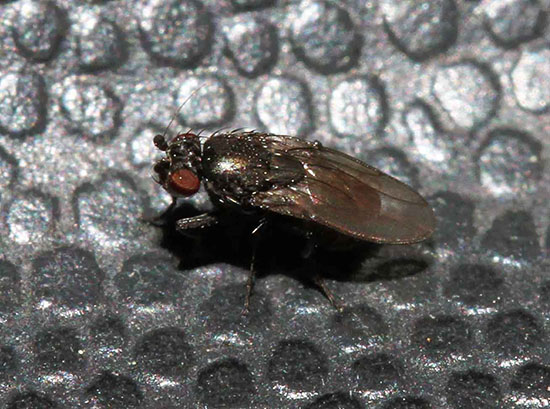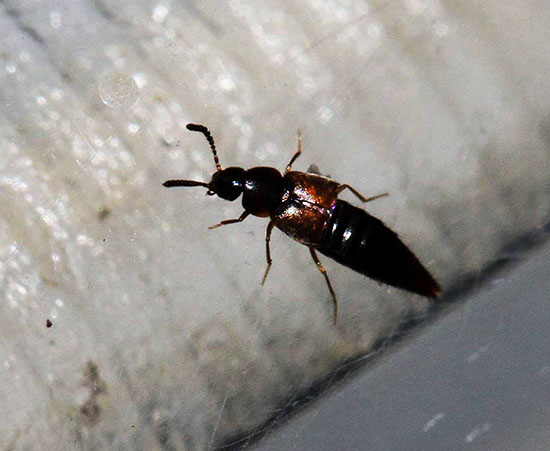Issue 5, May 23, 2016
Gnats in Your Face
Gnats have been bothersome recently. Numerous tiny flies hovering in one's face can result in reduced productivity and distraction can result in physical injury. Rove beetles are also numerous, appearing similar to gnats (small flies) while flying.
Eye gnats (Family Chloropidae) live as larvae in decaying organic matter. The recent frequent rains have aided in the decomposition of dead vegetation from the winter, producing the organic mush needed for their development. Mature larvae pupate with adult flies emerging a few days later. Adult eye gnats are black and about 2 mm (1/16 inch) long. They feed on secretions of the eyes and noses of people and other mammals, resulting in their common name. They are also attracted to secretions of the genitals of male dogs, resulting in various colorful colloquial names.

Eye gnat adult.
Buffalo gnats (Family Simuliidae) are also known as black flies. Their larvae are filter feeders in streams and rivers, using mouth fans to strain out tiny creatures and organic debris in the water current. The larvae of most species only survive in clean water. Efforts to reduce soil runoff and pollution of streams have allowed these and other insects such as mayflies, stoneflies, and caddisflies to become more numerous in Illinois. Adult buffalo gnats feed on the blood of mammals, birds, reptiles, and amphibians, frequently being specific to particular animals. The buffalo gnat species flying at this time do not appear to be biting people, but become nuisances flying around one's face. They are half again larger than the eye gnats, being about 3 mm long, and black. Typically in June, buffalo gnat species emerge that bite humans and birds, being nuisances to us but killing poultry and other birds where they are numerous.

Buffalo gnat adult on finger.
Rove beetles are slender with pointed abdomens and shortened wing covers (elytra). They vary in size and habits with various species being herbivores, predators, or scavengers. The currently numerous species are black with brown elytra and are about 3 mm long. Many insects will taste what they land on to determine whether it is edible. Tiny rove beetles such as these commonly produce noticeable pinch-like nips when they land on your skin.

Rove beetle adult.
Insect repellents containing DEET are effective although those with floral fragrances may be attractive to rove beetles. Small rove beetle species commonly feed on pollen. Hats with netting that protect the head from bothersome insects are also available. (Phil Nixon)
Author:
Phil Nixon